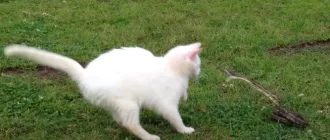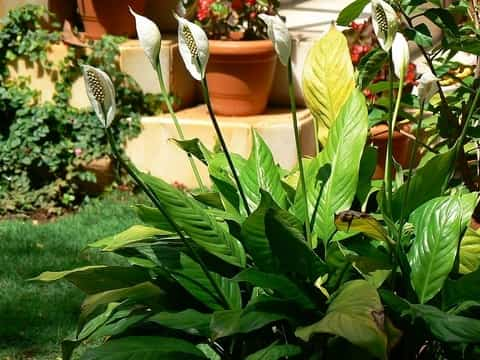As we know, felines wonder creatures. A leaf waving in the wind or a petal falling to the ground will bring even the most laid-back cat over to examine. Similar to all kinds of animals, felines examine with their mouths. If something is wiggly, your feline may come over to take a taste. If it smells good, specifically if it’s something they’ve tasted prior to and enjoyed, they’ll make a bee-line for the plant and begin munching on it.
Are Roses Poisonous or Toxic to Cats?
A rose by any other name might smell just as sweet, but some plants with “rose” in their names are harmful to your feline, according to the Humane Society. Do not let the word “rose” in a plant’s common name fool you into believing the plant can’t hurt Fluffy.
Roses
Roses are not hazardous to cats; however, they do have thorns. If your feline plays in a rosebush or tries to eat its leaves and stems, he could get an upset stomach and scratch his skin and face. Likewise, if you’ve used topical chemicals on your bush, they might make him sick. But if your feline rearranges your lovely rose arrangement and even decides to nibble a few of the rose petals, the only damage he’s most likely to encounter is a good tongue-lashing from you.
Lenten Roses
Lenten roses, have the taxonomic name Helleborus niger. This evergreen perennial reaches about 13 inches in height and blossoms from December to April. These ornamental garden plants– popular in Europe as Christmas decorations– are poisonous, so keep your curious cats away from them.
Desert Rose
The desert rose is likewise called the desert azalea, the Sabi star, the impala lily or the kudu lily. Its taxonomic name is Adenium obesum. This shrub can mature to 4 feet high and produces white or lavender flowers with dark throats. The flowers look similar to azalea flowers. The desert rose’s sap is poisonous; if you plant the desert rose in your yard, keep your shrub-chewing cats inside.
Moss Rose
Moss roses are annual succulents that prosper in heat, drought and poor soil. They are easy to care for and can be found in a variety of colors, which makes them popular as ground cover and for container plantings. They also pass the names portulaca, rock moss, purslane, pigweed, and pusley. Their taxonomic name is Portulaca oleracea. Moss roses are harmful to cats.
Primrose
The scientific name of this plant is Primula vulgaris. There are 450 species of this perennial in the wild, varying in size from a few inches high to more than a backyard high. It grows quickly and is a popular garden plant. Primrose oil has long served as an astringent and as a topical treatment for eczema and rheumatoid arthritis. Do not utilize it on your furry buddy, though; it is hazardous to felines and can cause throwing up.
Rosebay
Rosebay, likewise called rhododendron, terrific laurel or azalea, is poisonous to felines. This blooming shrub grows from 15 to 30 feet tall. With over 250 types, the rosebay is popular in home landscapes since of its prolific blossoms that are available in a range of colors. The leaves are the most harmful part of this plant, and a very percentage can eliminate a curious feline.
Rose of Sharon
Likewise called rose of China or althea, the rose of Sharon grows to 12 feet high and almost as broad. Its scientific name is Hibiscus syriacus. These deciduous plants have blue, pink, red, lavender, purple or white flowers that flower throughout the summer and fall. You ought to keep your little mischief-makers far from this plant because it also is dangerous.
What You Should Do If Your Cat Was Poisoned by Rose?
Obviously, it’s difficult to protect your felines from any potential threat. Pets are very fast and can slip out the front door within the blink of an eye. It’s essential to know how to spot the signs of poisoning in your cat and what to do so you can act rapidly.
The most typical signs of poisoning are vomiting and diarrhea; nevertheless, cats can throw up for other factors. Particular plants can cause particular symptoms; for instance, consuming from a Morning Glory plant can trigger agitation and staggering. Knowing your feline is essential, so you can be familiar with any unusual symptoms, not associated with a known cause, such as:
- Vomiting (without any other cause).
- Diarrhea (with no other cause).
- Unusual sleepiness.
- Increased thirst.
- Increased urination.
- Anorexia nervosa.
Naturally, if you believe your cat has consumed a dangerous plant, even with no apparent symptoms, call your local veterinarian immediately, or take your feline to an emergency situation veterinary healthcare facility. Let the healthcare facility staff and the vet understand which type of plant your feline might have eaten, so the proper treatment can be started.





